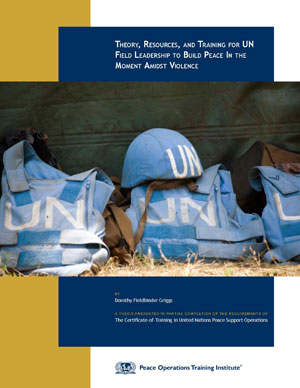Theory, Resources, and Training for UN Field Leadership to Build Peace In the Moment Amidst Violence
Tesis de COTISPO: Aprobado
Estudiante: Griggs, Dorothy Fieldbinder
Fecha de Aprobación: Mar 2010
Un extracto de la tesis:
Since the cold war ended in the 1990s, typical UN mission conflicts have emerged as armed conflicts within states for resources or political rights. In accord with research advice (Fusato, 2003), some preventive goals of the missions have been to offer interventions to stabilize a potentially violent conflict, to select activities directed at root causes and triggers of a dispute, and to integrate interventions to prevent conflict situations. With Secretary-General Ban Ki-moon (2009), the UN’s current role and major influence towards peace encourages support for national efforts from conflict prevention and from building national capacity in the field. The shift from peacemaking or traditional peacekeeping missions to complex peacekeeping and peace-building missions has increased the demand for UN support throughout the world. Currently, there are sixteen peacekeeping operations scattered around the world with over 113,000 troops, military observers, and civilian personnel (Peacekeeping, 2009).
